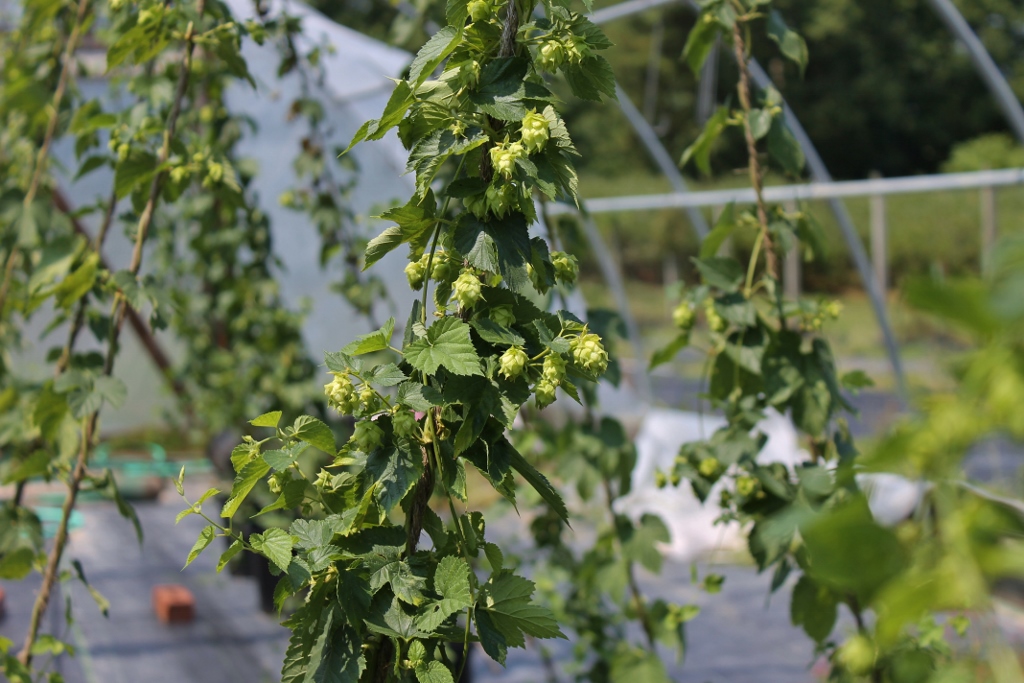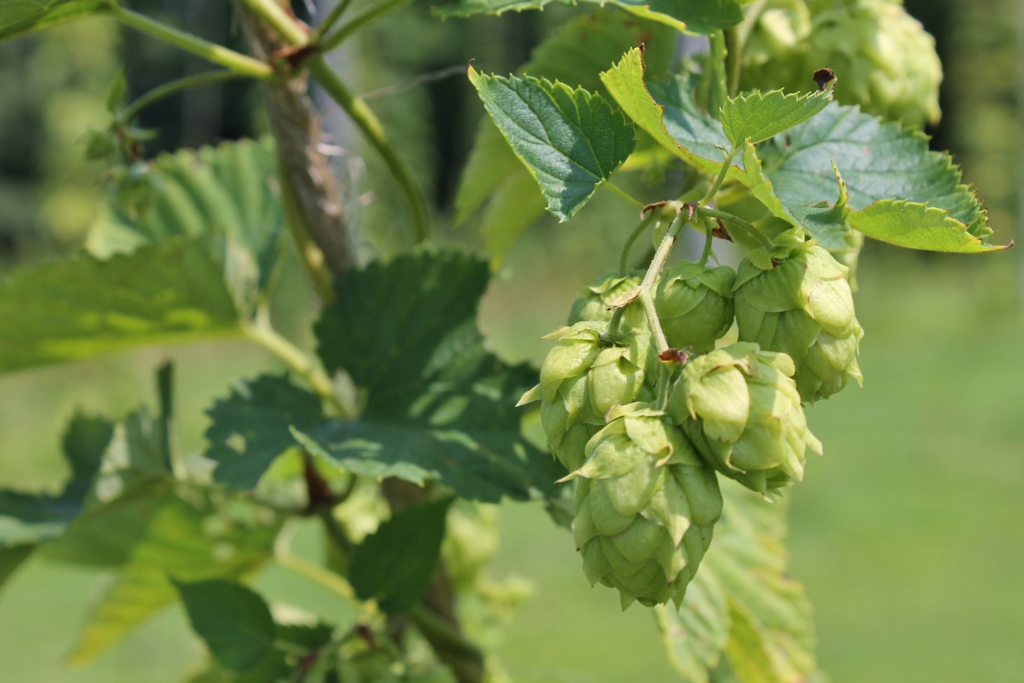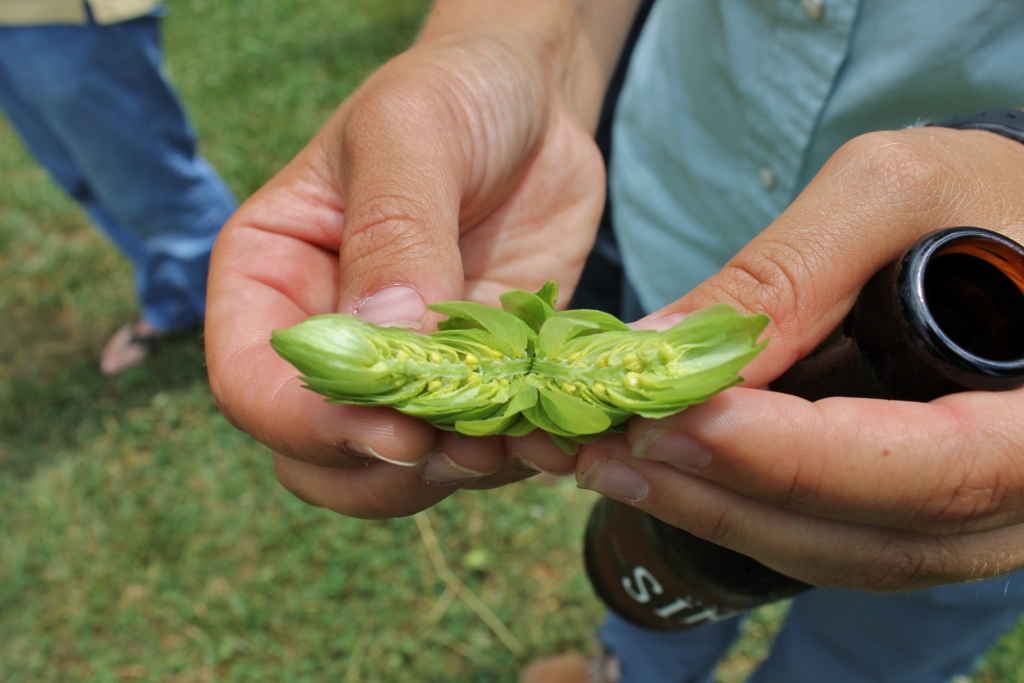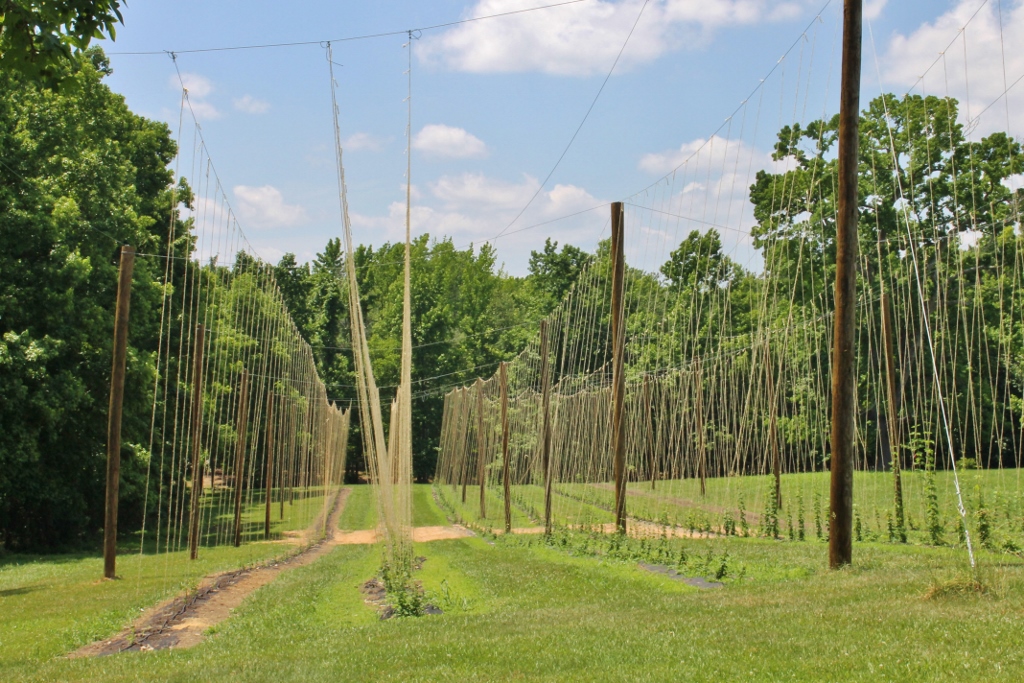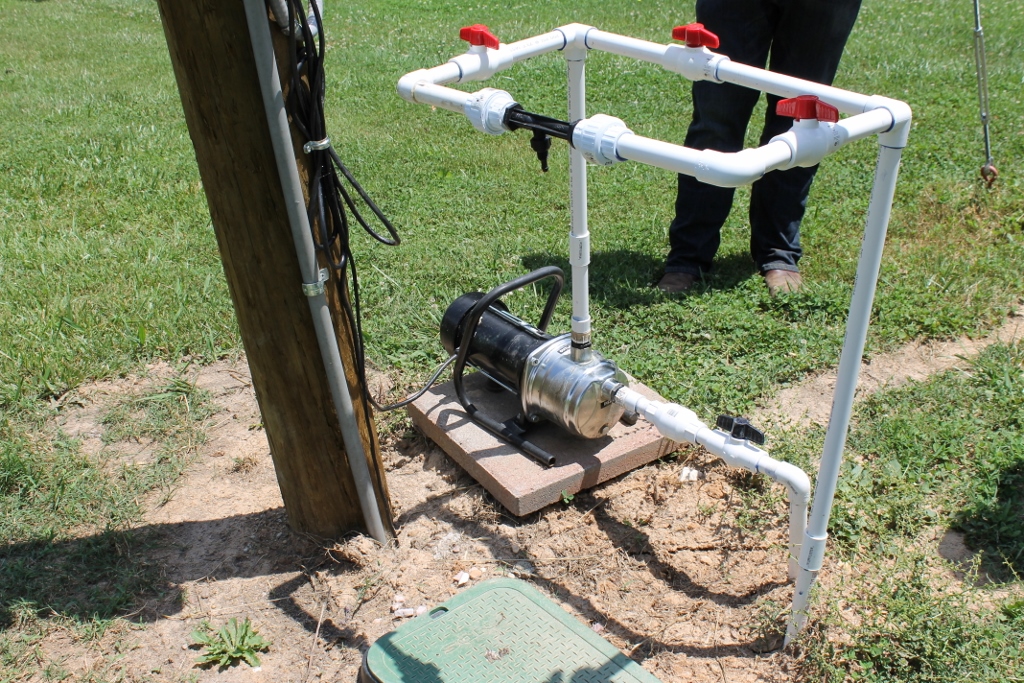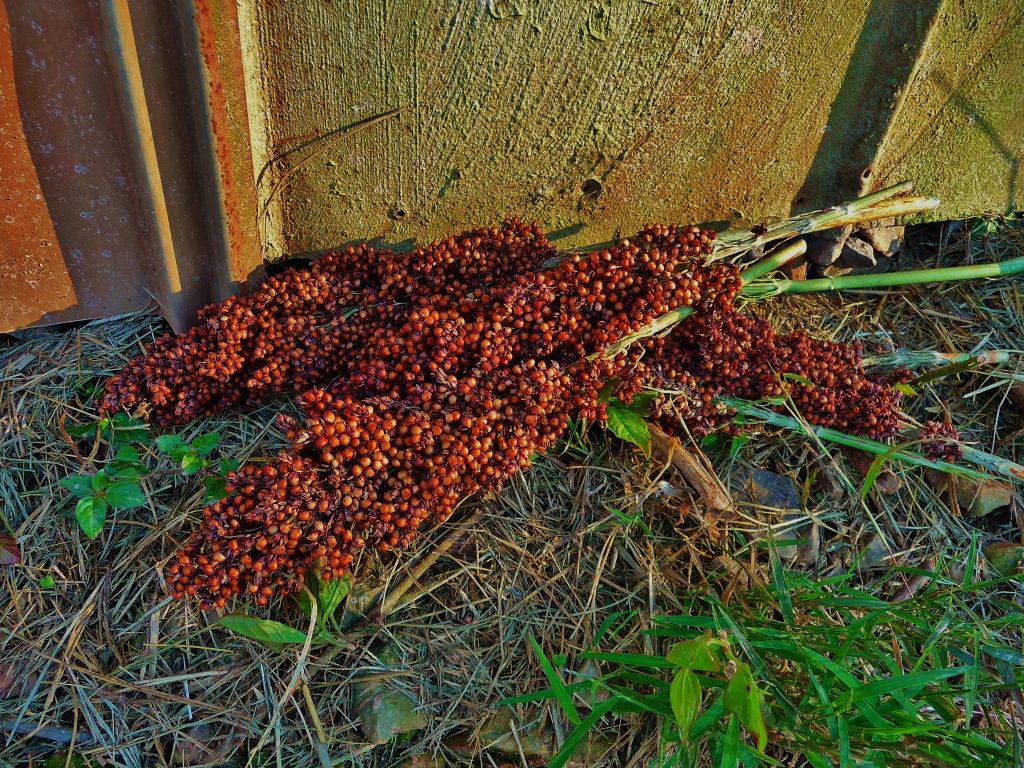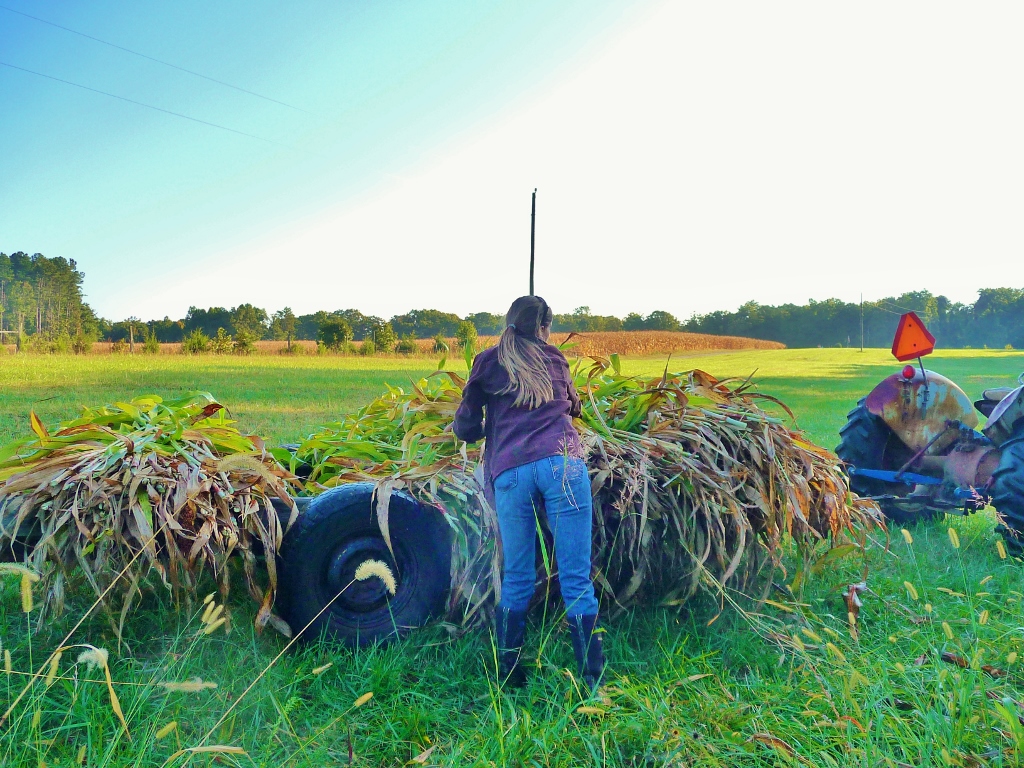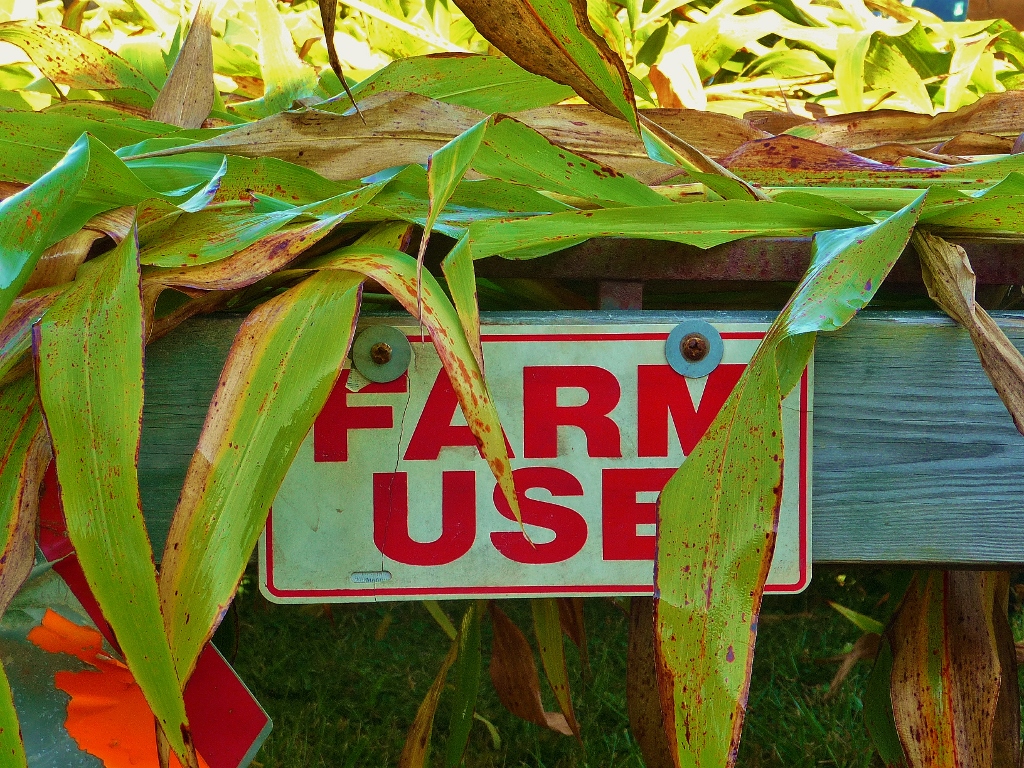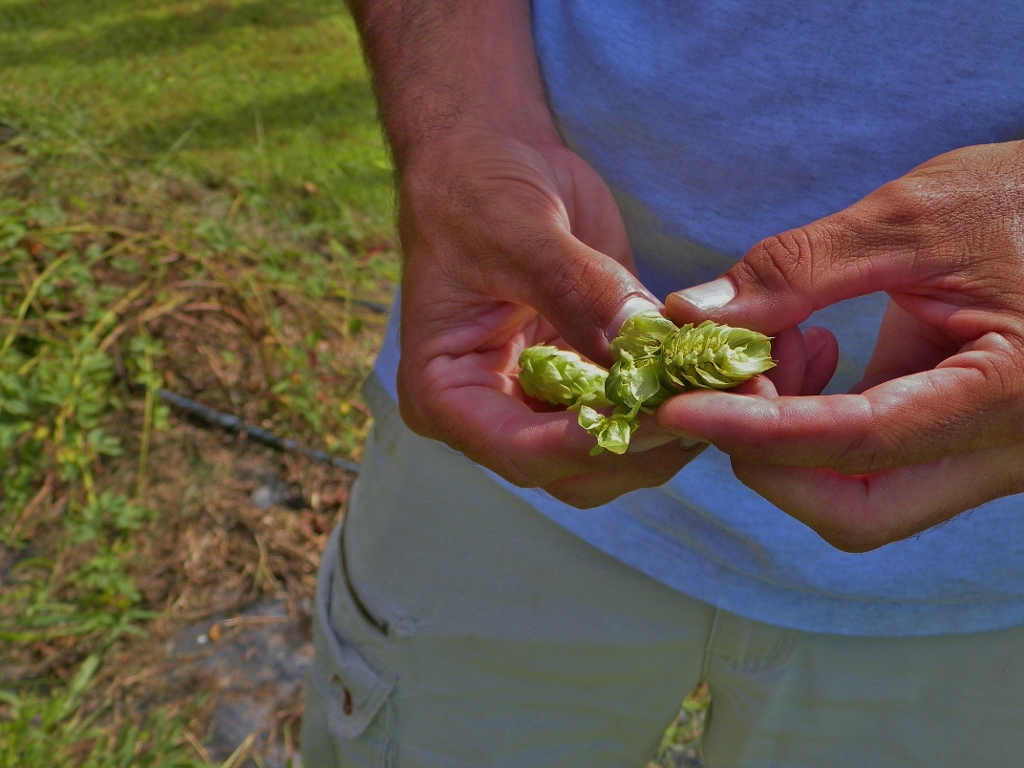Last year, we posted our first story about Piedmont Hops, run by business partners David Goode and Steve Brown. Piedmont Hops includes a yard in Chesterfield County and a second yard in North Carolina. Click on the original story here to read about the background of this operation and learn more about how hops are grown.
 The hops industry is growing in Virginia thanks to increased demand for locally-produced goods, an upswing in consumer interest in craft beer, and a boost in the number of brewers establishing themselves in Virginia. David Goode and Steve Brown began growing hops as a hobby, but soon found themselves growing commercially to meet the needs of the industry. Last year, the business consisted of two hundred plants. In 2014 it has been expanded to four hundred and thirty plants, and the combined total for both yards will reach 800-1,000 in 2015. Their hops, once planted, grow perennially out of a crown in the soil, but the bines that produce hops cones grow from new shoots each spring that are trained to grow upward on twine hung from a trellis.
The hops industry is growing in Virginia thanks to increased demand for locally-produced goods, an upswing in consumer interest in craft beer, and a boost in the number of brewers establishing themselves in Virginia. David Goode and Steve Brown began growing hops as a hobby, but soon found themselves growing commercially to meet the needs of the industry. Last year, the business consisted of two hundred plants. In 2014 it has been expanded to four hundred and thirty plants, and the combined total for both yards will reach 800-1,000 in 2015. Their hops, once planted, grow perennially out of a crown in the soil, but the bines that produce hops cones grow from new shoots each spring that are trained to grow upward on twine hung from a trellis.
David and Steve collaborate frequently with fellow hop producers, and many prospective growers have toured the operation to learn about the industry. In fact, Piedmont Hops is part of the Old Dominion Hops Cooperative, a grower organization that fosters networking between members and outreach to brewers about Virginia-grown hops. Piedmont Hops has also taken advantage of the opportunity to participate in the Virginia Grown marketing program offered by the Virginia Department of Agriculture and Consumer services, whereby growers in the state can have their farms and products listed in a searchable online directory available to consumers.

Soil in the new ground at the Chesterfield yard will be amended to prepare for additional plants for the 2015 season.
We spent some time visiting with David at Piedmont Hops this summer and discussing the progress they have made since we last wrote about the operation.
 How is the 2014 season going?
How is the 2014 season going?
2014 could have been better. We made some minor mistakes in VA and have learned a great deal from them. Our NC yard started slow, but decided to wake up early June. We were worried, but it appears we will have a nice yield of hops there.
Did you learn anything from 2013 that motivated you to make changes going into this 2014 season?
We learned the hard way this season that we did not amend our soils properly and we very low on organic matter. Our 2013 fall planting struggled to get going. We planted Columbus in the fall. They did not do well. We planted Zeus, a mirror image variety to Columbus in late spring 2014. It grew much better than Columbus. We will be replacing our Columbus with Zeus.
Any there any new practices you are trying in 2014?
We do soil testing in both yards, a must with this crop. Our fertilizer program in VA can be improved. We may look into fertigation for 2015. We plan to send hops for analysis to VA Tech as soon as we have some more available to harvest. We have worked with our county Extension agents on tissue sampling. What a fun experience it was working with Mike Likins (Agriculture and Natural Resources and Environmental Horticulture agent for Chesterfield County Extension) and seeing the hops under a microscope-very rewarding.
Have you added any new varieties in your yards this year?
We grow in both yards Cascade, Chinook and Nugget. We have added Zeus.
What is your outlook on your grower organization, Old Dominion Hops Cooperative, and the Virginia industry as a whole?
It is great to see the cooperative gaining members and recognition. We are glad to be part of the organization and what it stands for. We regularly attend meetings and always promote and encourage farmers to join. It’s a great way to learn, gain friendships, and fellowship. The industry is growing with the help of Stan Driver, Jeanine Davis, NC State, Virginia Tech, and Virginia Cooperative Extension.
What has been your biggest challenge so far in this business?
Japanese beetles and spider mites at our VA yard have been our biggest challenges. We took care of the mites organically, but failed to rid the bines of beetles. Having two yards in two states makes for challenging logistics. We get it done, but it’s a lot of wear and tear on the bodies.
Do you have any successes you’d like to share?
We were able to successfully market hops shoots to a restaurant in NC, the Eddy Pub. We continue to propagate strong plant material for our VA yard. Our plant cuttings we take in the spring and plant in late May reach the top of our trellis and are full of cones.
 Marketing Virginia-grown hops is relatively new territory for many growers in this industry. Can you update us on your marketing efforts this year?
Marketing Virginia-grown hops is relatively new territory for many growers in this industry. Can you update us on your marketing efforts this year?
We have sold hops to Haw River Farmhouse Ales and Steel String, both North Carolina breweries. Haw River made a hops soda that was a big hit using our fresh NC Cascade. We have the remaining VA hops going to Hardywood Park for their seasonal RVA IPA. Our NC yard will be harvested soon and we are currently working with several NC clients regarding those hops.

Hops are perennials that grow outdoors and require a tall trellis. However, David had some leftover plants in buckets sitting in an unused hoop house this spring. On a whim, he hung some twine from the roof and let the bines climb, and surprisingly enough, these potted plants grew to the top quickly and will offer excellent cones for harvest time.
Piedmont Hops has an excellent webpage and facebook page. How are you using social media in your business?
We thoroughly enjoy taking photos of hops. We get creative and have fun with it. Social media is great for keeping our beer friends up to date on our yards and where they can find our hops. We use Facebook, twitter and Instagram. We have had a few sales based on our social media posts. Most of our marketing is direct emails to the brewers or stopping by for a pint and a chat about locally grown hops. Social media goes both ways. We love checking out photos of other yards and their hops. Folks love showing off their bines!
Additional Resources for Readers:
Piedmont Hops Webpage
Piedmont Hops Facebook page
Old Dominion Hops Cooperative
North Carolina Hops Project
Virginia Cooperative Extension – Chesterfield County (find your local office and agents here)
Virginia Grown program and searchable farm and food directory


